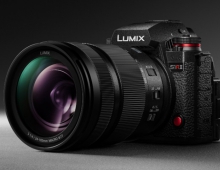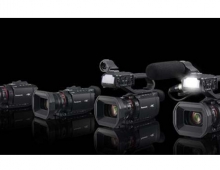
Panasonic to release digital SLR camera with Leica lens in 2006
Olympus Corp and Matsushita Electric Industrial Co, Ltd have agreed a joint development of interchangeable lens-type digital single-lens reflex (SLR) cameras.
The companies are aiming to individually present their operational prototypes at PMA 2006, to be held in February 2006 in the US, and introduce them to the market within the same year. Both companies' products will support the Four Thirds System, a digital SLR camera standard proposed by Olympus.
The agreement includes the following three key objectives. (1) The two companies will jointly develop elemental technologies and core components to be used in SLR camera systems (including camera bodies, interchangeable lenses, related system peripherals and accessories) based on the Four Thirds System standard. (2) The companies will individually develop products that incorporate the joint development's achievements, and market them under each company's brand name. (3) With the aim of spreading the Four Thirds System standard, the two firms will encourage other firms to participate in the standard and develop compatible products.
Neither Olympus nor Matsushita has specified the outlines of their prototypes, details of the development, or the development and production schedules. "We are starting detailed product planning today," they said. "We may revise the development's content and schedule in accordance with the planning," they added. Olympus, however, in discussing what its prototype will be capable of, stressed the superiority of a module that shakes the dust off the image sensors. This technology is not included in the Four Thirds System standard, though. Matsushita is likely to provide its semiconductors and its design and manufacturing technologies for the image stabilizer, while Olympus is expected to provide its know-how in designing and manufacturing SLR camera systems.
The agreement includes the following three key objectives. (1) The two companies will jointly develop elemental technologies and core components to be used in SLR camera systems (including camera bodies, interchangeable lenses, related system peripherals and accessories) based on the Four Thirds System standard. (2) The companies will individually develop products that incorporate the joint development's achievements, and market them under each company's brand name. (3) With the aim of spreading the Four Thirds System standard, the two firms will encourage other firms to participate in the standard and develop compatible products.
Neither Olympus nor Matsushita has specified the outlines of their prototypes, details of the development, or the development and production schedules. "We are starting detailed product planning today," they said. "We may revise the development's content and schedule in accordance with the planning," they added. Olympus, however, in discussing what its prototype will be capable of, stressed the superiority of a module that shakes the dust off the image sensors. This technology is not included in the Four Thirds System standard, though. Matsushita is likely to provide its semiconductors and its design and manufacturing technologies for the image stabilizer, while Olympus is expected to provide its know-how in designing and manufacturing SLR camera systems.





















